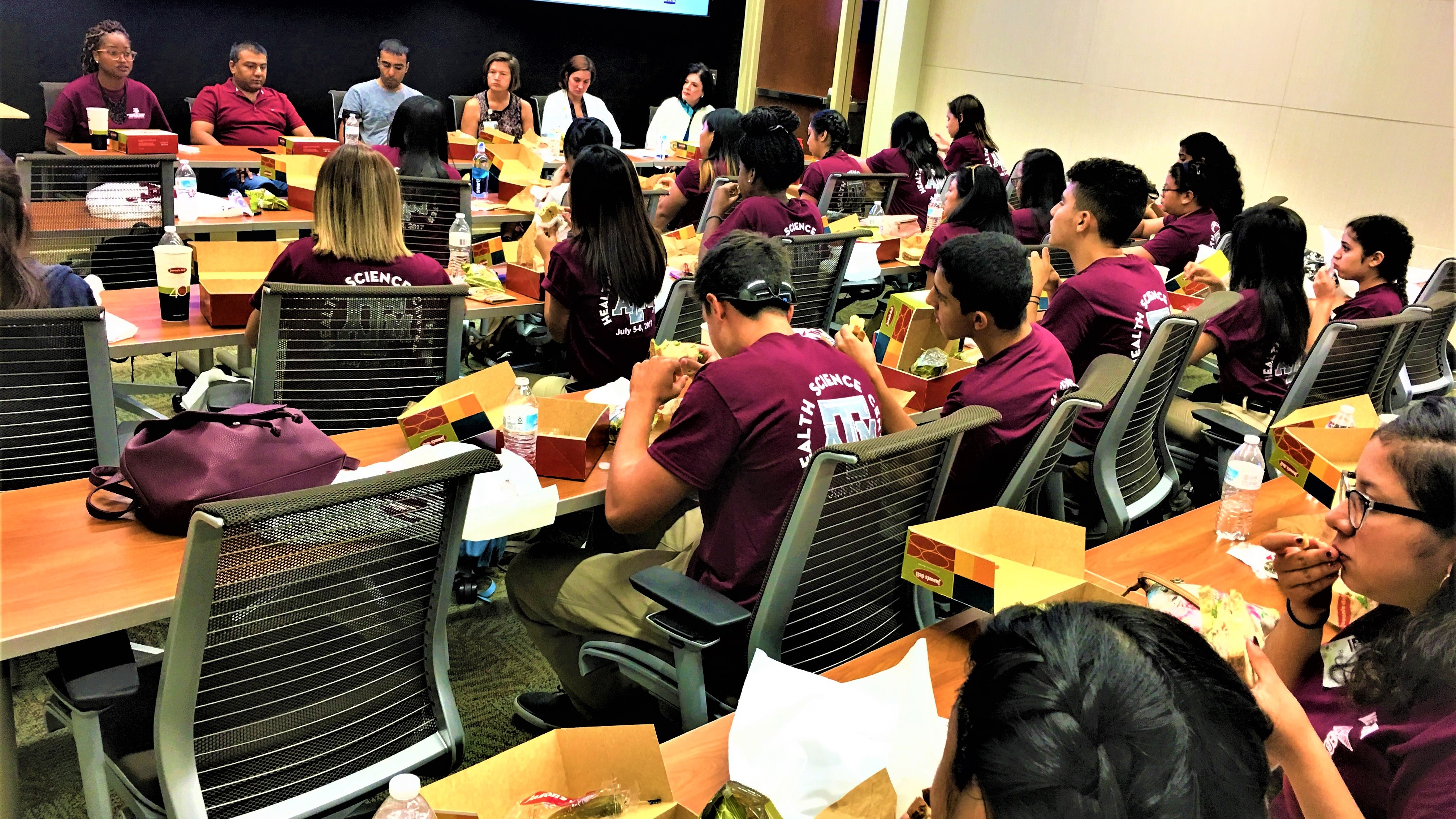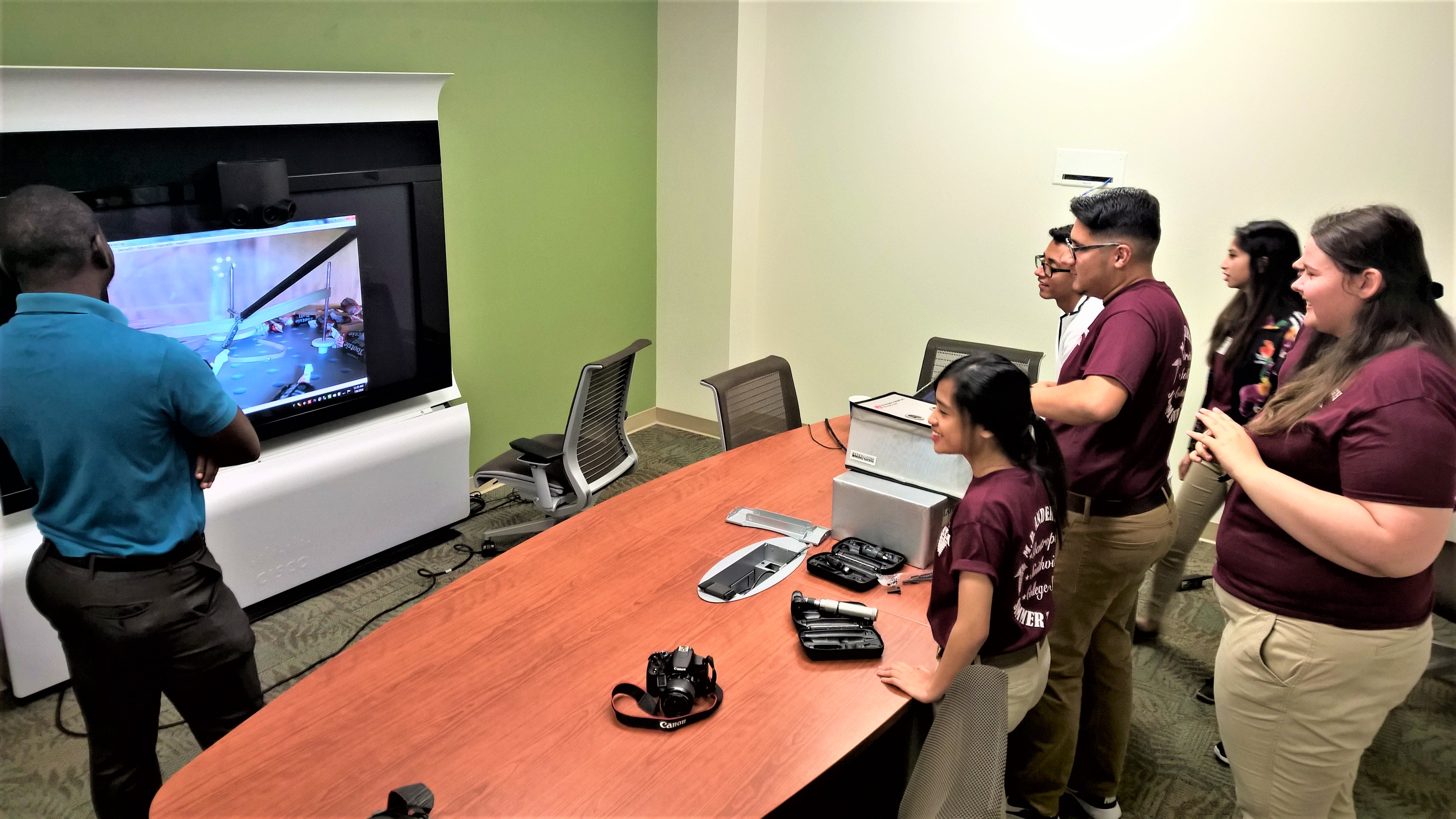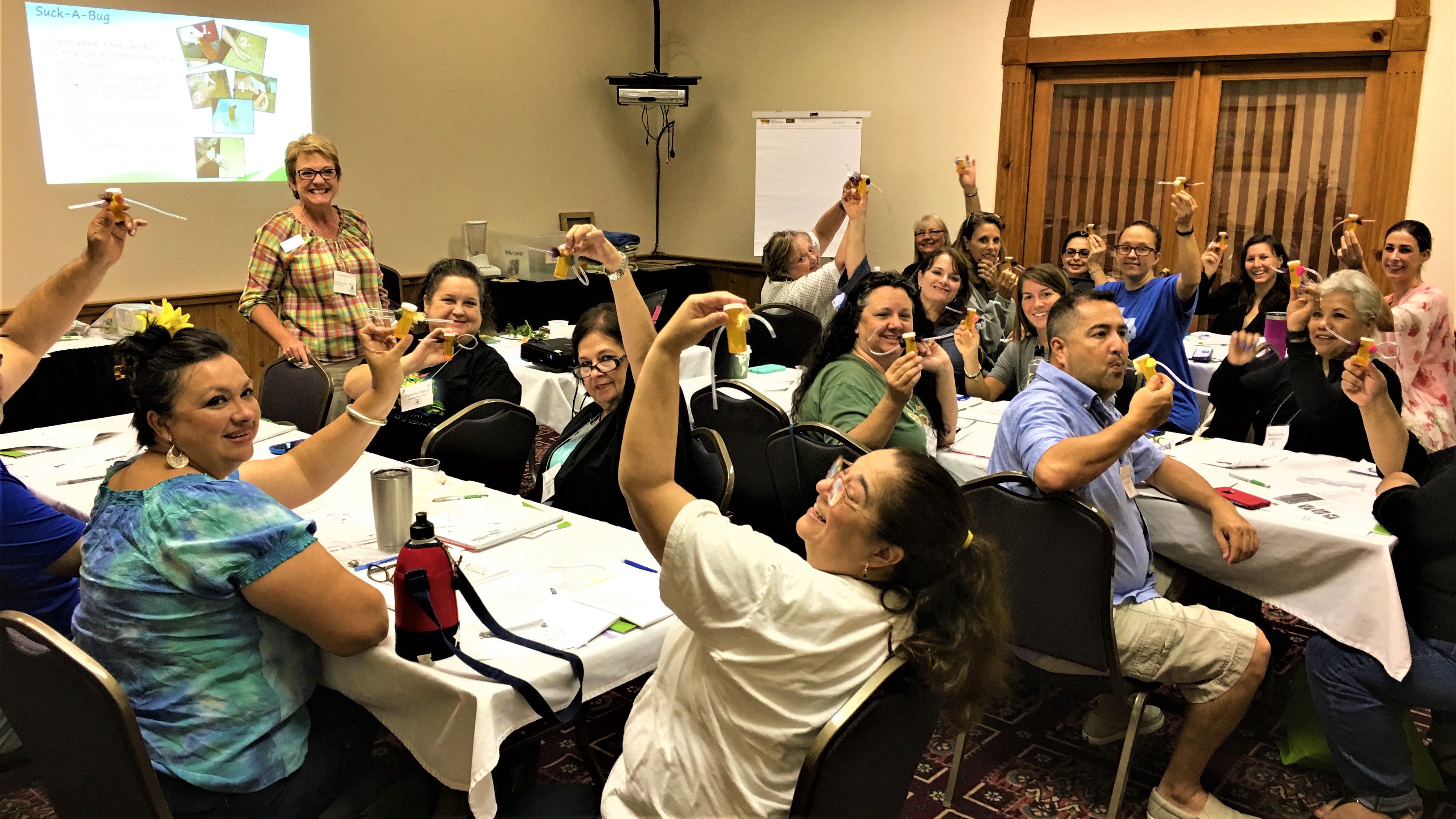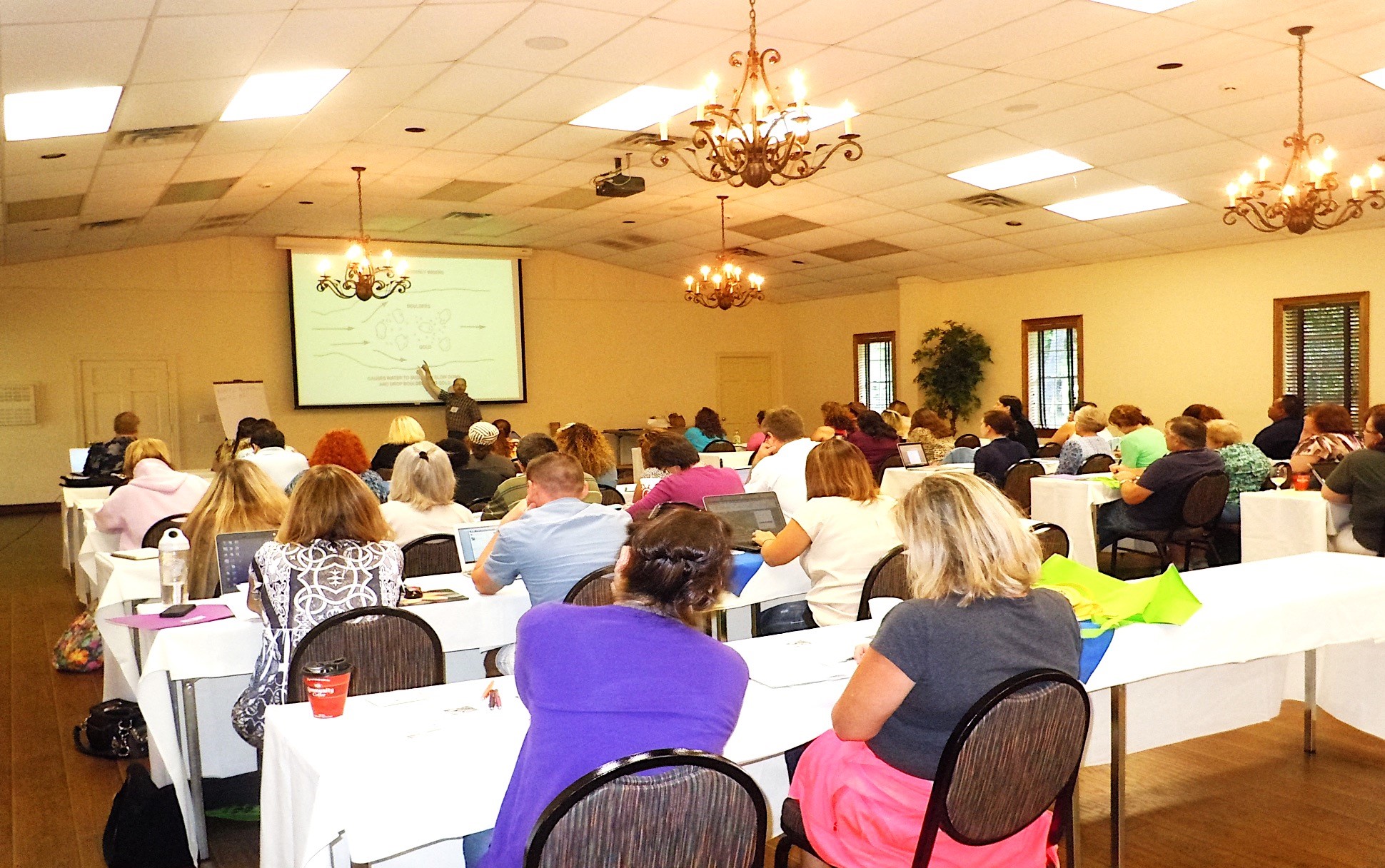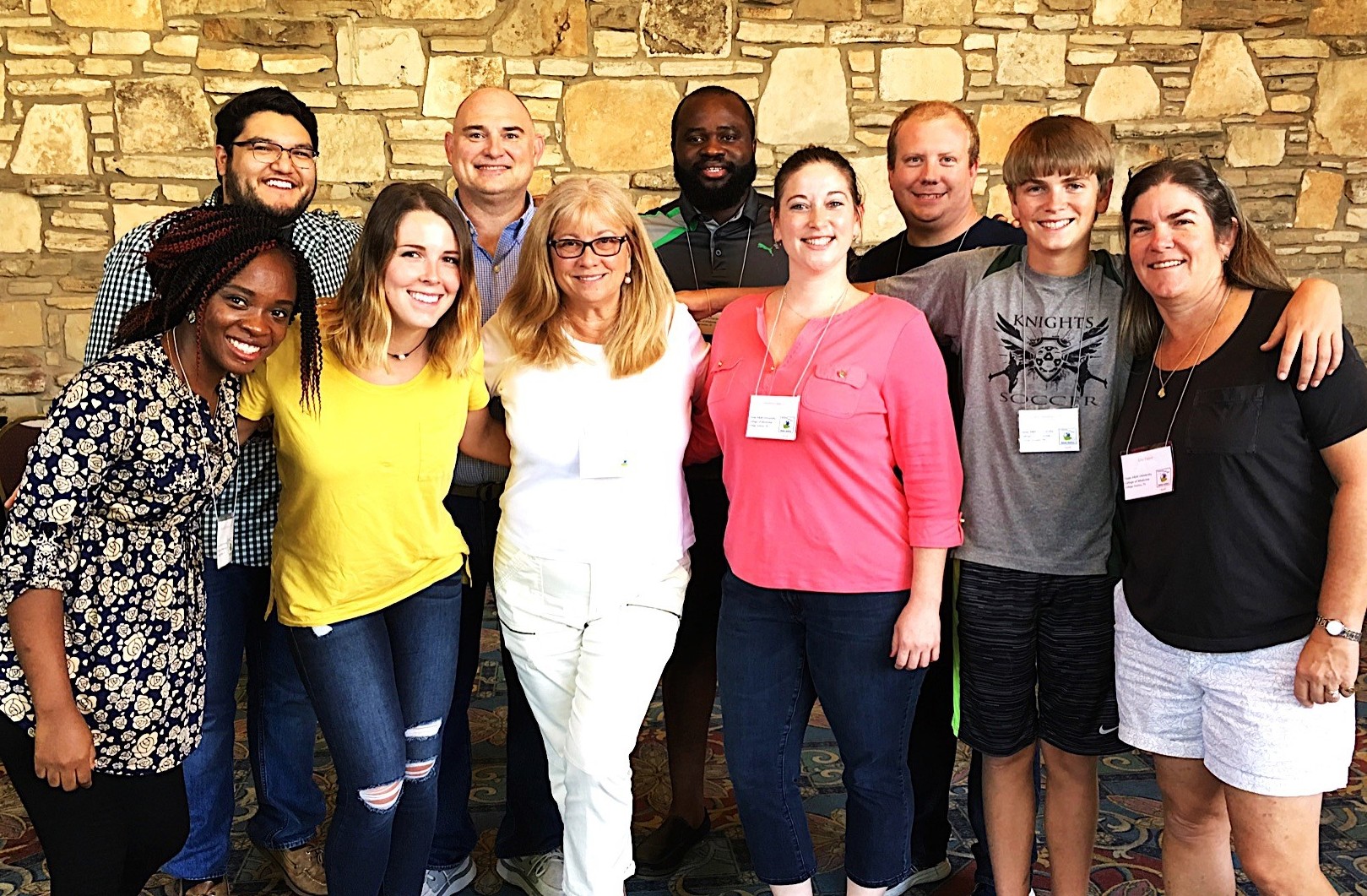The table below provides a list of available Texas A&M faculty members willing to host high school students this summer in their labs, with a brief description of their research focus. Identify your top three research interests from this list and input the names of the corresponding faculty in the application. Young Scholars (Engineering & Biomedicine) faculty are listed here.
TAMU faculty |
College/School within TAMU |
Research Description |
|
Dr. Carolyn Cannon |
College of Medicine, Department of Microbial Pathogenesis and Immunology |
Dr. Cannon’s laboratory focuses on the development of novel antimicrobial formulations including drug-loaded nanoparticles and electrospun membranes to treat infections with multi-drug resistant bacteria. High school “Lab Rats” have the opportunity to learn simple chemical reactions to create some of the small molecule antimicrobials, then confirm the yield and structure of the products using nuclear magnetic resonance (NMR) techniques. Students may learn cell culture techniques and assays to assess in vitro toxicity of the antimicrobials, as well as approaches to create drug-loaded nanoparticles and electrospun membranes. Techniques to characterize the nanoparticles include dynamic light scattering (DLS) and electron microscopy to assess size, and measurement of zeta potential to assess charge. The student may measure the drug release rates from both nanoparticles and electrospun membranes before testing the efficacy |
|
Dr. Kayla Bayless Associate Professor |
College of Medicine Department of Molecular and Cellular Medicine |
Endothelial invasion in 3-D matrices The mechanism through which primary human endothelial cells invade into 3-D matrices is being studied. The model used mimics angiogenesis, or the process of new blood vessel formation from existing structures. Angiogenesis is critical for successful pregnancy and abnormally stimulated during tumor growth, rheumatoid arthritis and blinding eye diseases such as diabetic retinopathy, retinopathy of prematurity and macular degeneration. Intracellular molecular signals that are responsible for endothelial invasion responses are being investigated; along with important surface molecules include membrane-associated matrix metalloproteinases and integrins. We are utilizing pharmacological, gene knockdown, gene expression and protein localization studies to confirm the involvement of all molecules identified in preliminary screening experiments. |
|
Dr. Itza Mendoza Assistant Professor |
School of Public Health | Dr. Mendoza’s research interests include experimental and mathematical models to understand transport and persistence of contaminants in the environment and associated health effects. She is currently working on antibiotic-resistance in the environment and how humans contribute to and are affected by reservoirs of contaminant antibiotics and antibiotic-resistance in the soil. Her long-term research goal is to contribute toward the development of exposure predictive tools that can be used to understand and prevent the spread of infectious diseases among vulnerable populations. |
|
Dr. Robin Fuchs-Young (Lab) Professor |
College of Medicine Department of Molecular and Cellular Medicine |
The Fuchs-Young laboratory studies the basic mechanisms of breast carcinogenesis, including the interaction (cross-talk) between the estrogen receptor alpha (ERa), IGF-1 and p53 signaling cascades. Our research utilizes a variety of unique in vivo and in vitro models, including transgenic and humanized mice. An underlying theme of our research is the discovery of bio-physiological determinants of disparities in breast cancer incidence and outcome. One of our projects utilizes the BK5.IGF-1 transgenic mouse model, in which IGF-1 expression is directed to the K5+ myoepithelial cells, and thus mimics the paracrine effects of stromal IGF-1 on mammary ductal epithlelium. This is one of the few mammary cancer models in which tumors express functional estrogen receptor, and it is therefore a useful model for studying cross talk between the ER and IGF-1 signaling systems. Studies with this model have identified a developmentally controlled "pathway switch" that determines the effects of IGF-1 on mammary development and tumor susceptibility. A new project in the laboratory project is focused on investigating the impact of exposure to metabolic syndrome during different stages of development on metabolic function and mammary cancer risk. This line of research was initiated, in part, due to the obesity epidemic in the United States, and the increasing prevalence of obesity in younger children. Initial results show that manipulation of gestational, lactational and post-weaning diet can have very significant effects on susceptibility to mammary carcinogenesis. |
|
Dr. Robin Fuchs-Young (Outreach) Professor |
College of Medicine
Department of Molecular and Cellular Medicine |
Since 1999, Dr. Fuchs-Young has directed an extensive outreach and education program that provides health-promotion/disease-prevention information for a variety of audiences through a series of integrated activities. The broad range of our programs can generally be organized into those related to: 1) Community engagement and environmental justice efforts aimed at prevention of environmental diseases, including cancer, 2) Enhancement of K-12 education through professional and career development for teachers and students, 3) Educational programs for opinion leaders and policy makers. The scope of this program includes recruitment of and training and mentorship for the next generation of scientists, technologists and health care professionals, and includes a focus on underrepresented minorities in science. As part of these efforts, the program has developed and disseminated informative and educational materials for communities, provided research internships and field experiences for undergraduates and high school students, sponsored professional development and in-service teacher training programs for K-12 educators, created websites to disseminate online educational materials and provided science and technology education and career development for K-16 students. |
| Dr. Nasir G. Gharaibeh, Dr. Galen Newman, Dr. Jaimie Masterson |
College of Architecture
|
Assessing the Built and Natural Environments in Local Communities using Unmanned Aerial Vehicles: Stormwater Infrastructure and Heat Islands Dr. Gharaibeh (civil engineering), Dr. Newman (landscape architecture), and Professor Mastersons’s (urban planning) research groups focus on advancing the design and development of sustainable communities through innovation in science, technology, and community engagement. Participants in this program will use an unmanned aerial vehicle (UAV), also known as a drone, to investigate environmental problems facing urban communities, including inadequate stormwater drainage infrastructure and urban heat reflection and albedo, also known as “heat islands.” Through this project, the high school student researchers will work with local communities and TAMU researchers to investigate these environmental problems within the Rio Grande Valley (including Hidalgo County and Willacy County) using UAV data collection and modeling techniques. Specifically, the high school student researchers will learn about the UAV technology and will participate in the collection and analysis of local scaled data obtained from the UAV sensors, including a high resolution 3D optical camera, a FLIR Zemuse XT super-high resolution thermal imaging camera, and light detection and ranging (LiDAR) scanner. The participants will work in the Langford Architecture Center and Scoates Hall on The Texas A&M University Campus and become a salient part of a unified community of scholars (faculty and graduate and undergraduate students) from civil engineering, landscape architecture, and urban planning conducting interdisciplinary research on sustainable and resilient communities. |
|
Dr. Natalie Johnson Associate Professor |
School of Public Health |
Dr. Johnson’s lab is focused on how exposure to air pollutants during pregnancy impacts childhood health. We are specifically studying the role of ultrafine particles (Nano-sized particles that reach deep within the lung and cause systemic oxidative stress) in infant predisposition to developing severe respiratory infection. Using a mouse model of ultrafine air pollution exposure and neonatal respiratory syncytial virus infection (a leading cause of infant disease), the lab is investigating how the oxidative stress response to air pollution influences infant infection. High school student researchers will learn many assays used to measure oxidative stress in samples collected from our mouse model, including lung, liver and placental tissues. Assays include high performance liquid chromatography-mass spectrometry, enzyme-linked immunoassay (ELISA), primary cell culture techniques and flow cytometry to measure reactive oxygen species. These assays will be performed in samples collected from exposed and non-exposed mice, in wild-type (control) and genetically-susceptible mice. |
|
Dr. Timothy Lightfoot Professor |
College of Education and Human Development | Dr. Lightfoot’s lab is focused on how biological and genetic factors regulate daily physical activity levels. We are specifically studying how both genetic mechanisms and environmental influences interact to increase or decrease activity. Using a mouse model of physical activity, Dr. Lightfoot's lab is investigating how specific genes (e.g. dopamine receptor 1, anexin IV, and calsequestrin) in conjunction with alterations in diet alter physical activity. High school student scholars will learn primarily protein quantitation methods, using primarily western blot procedures. |



